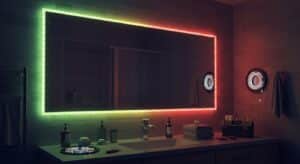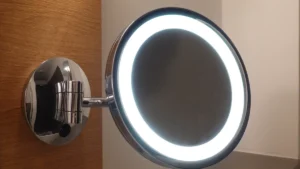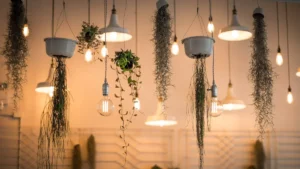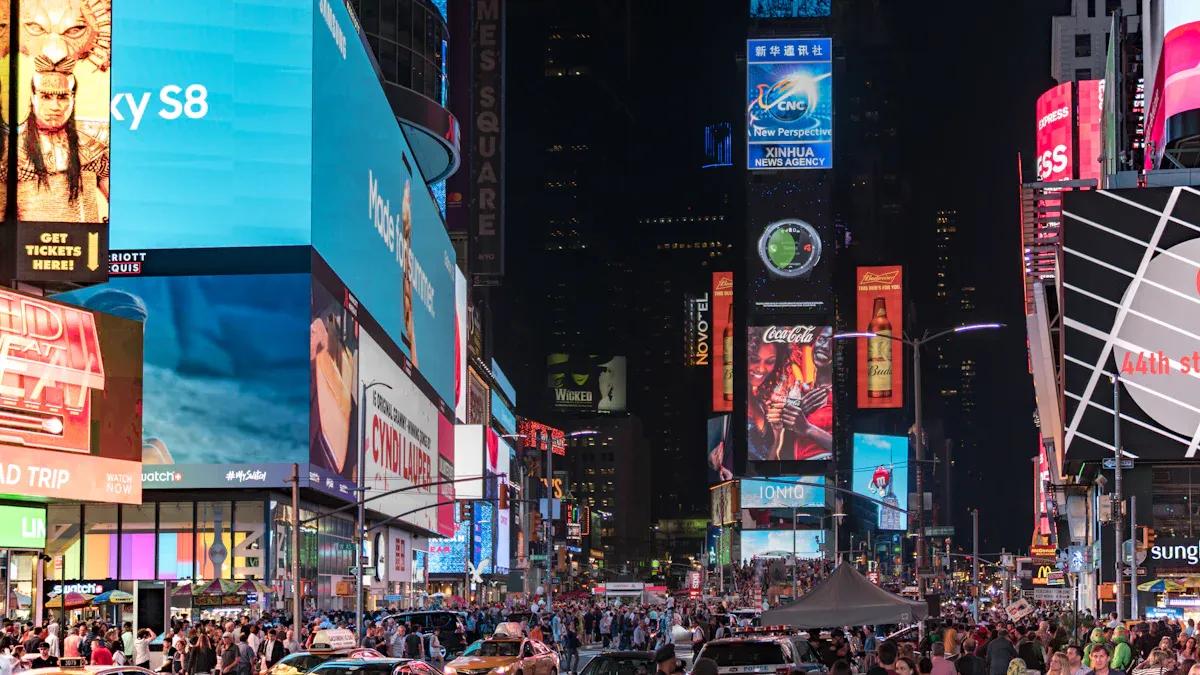
A backlit LED display uses small lights called LEDs to light up the screen from behind. This makes the screen bright and colorful. It is now very important in modern screens because it shows clearer pictures and saves more energy than older ways.
The demand for backlit screens is growing fast. It is expected to grow from $35.92 billion in 2024 to $52.96 billion by 2029.
LED screens are popular in gadgets because they show bright colors and dark blacks. They are great for TVs, computer monitors, and phones.
You see these screens every day, like when you watch TV, shop online, or stop at a traffic light. They make pictures brighter and colors more real, changing how you see things.
Key Takeaways
Backlit LED screens use energy-saving LEDs to show bright, colorful pictures. They are great for modern gadgets.
These screens use up to 70% less energy than older ones, like CCFL. They also last much longer, helping people and the planet.
LED backlights make pictures look better with features like local dimming. This boosts contrast and makes colors pop.
This technology works in many devices, like TVs, phones, medical tools, and digital signs. It gives clear pictures in different places.
New ideas like mini-LED and micro-LED bring brighter screens and save more energy. They are changing how displays work in the future.
Understanding Backlit LED Displays
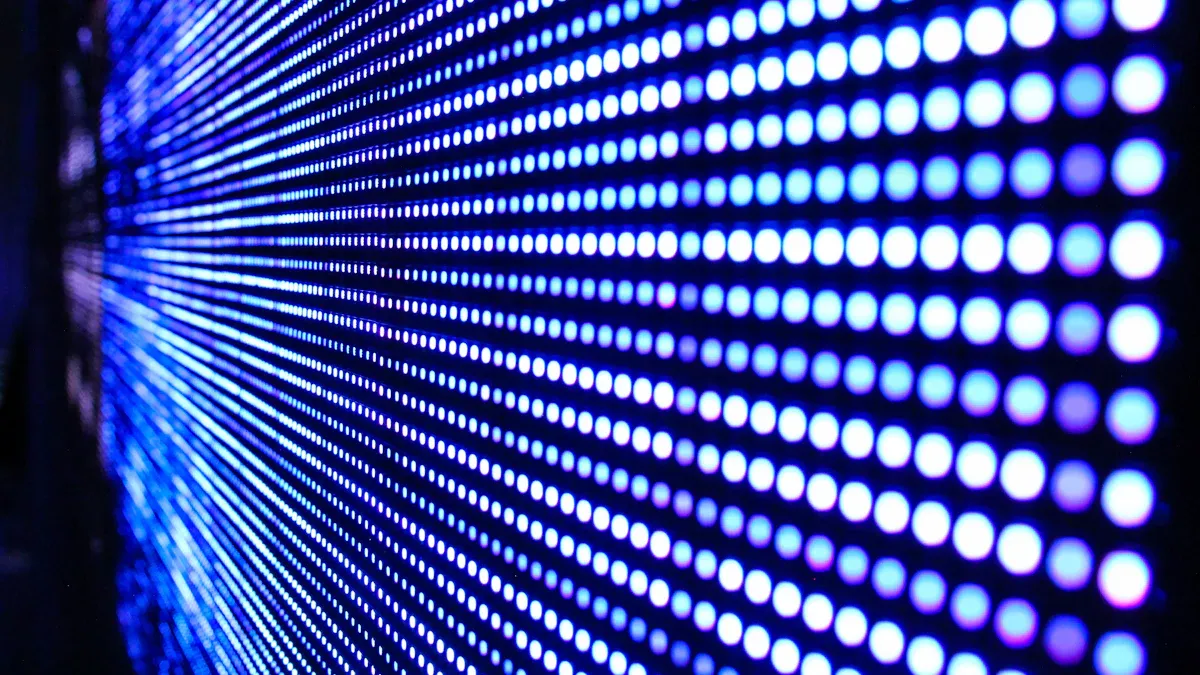
What makes a backlit LED display unique?
A backlit LED display is special because it shows bright, clear pictures and uses less energy. Unlike older lights like CCFL (cold cathode fluorescent lamp), LED backlights use tiny, energy-saving lights called diodes. These lights can be placed in different ways, like edge-lit or full-array, to make the screen evenly bright.
One big advantage of backlit LED displays is their brightness. They work well in both bright rooms and dark spaces. They also have better contrast, especially with full-array local dimming. This feature changes the brightness in certain areas, making blacks darker and colors brighter.
Specification Type | Backlit LED Displays | Other Technologies (e.g., OLED) |
|---|---|---|
Backlighting Method | Uses LEDs for backlighting (edge-lit/full-array) | Each pixel emits its own light (no backlighting) |
Brightness | Brighter due to LED technology | Usually less bright than LED displays |
Contrast | Better contrast with local dimming | High contrast with deep blacks |
Resolution | High resolution with SMD technology | Varies, OLED can also have high resolutions |
Energy Efficiency | Saves more energy with new advancements | Efficient, but depends on the model |
These screens last longer than older CCFL ones. LEDs use up to 70% less power and don’t have mercury, making them safer for the planet. Their mix of brightness, energy-saving, and durability makes them great for today’s devices.
How LED backlights revolutionized display technology
LED backlights changed how we see screens. Before LEDs, CCFL lights were used. But CCFLs used more energy, didn’t last as long, and had harmful mercury. Switching to LEDs made screens brighter, more colorful, and energy-efficient.
In 2012, flexible backlight technology was introduced. This allowed for curved and custom-shaped screens. It helped LED displays become popular in phones, TVs, and even AR (augmented reality) and VR (virtual reality) gadgets.
Feature | LED Backlighting | CCFL |
|---|---|---|
Lifespan | Lasts up to 10 times longer | Shorter lifespan |
Power Consumption | Uses up to 70% less power | Uses more power |
Mercury Content | None | Contains mercury |
Today, LED backlights are key for sharp, high-quality screens. They help displays show better contrast and higher resolutions. This makes them perfect for gaming, medical tools, and more. Moving from CCFL to LED has improved performance and helped the environment, benefiting everyone.
Components of Backlit LED Display Technology
The role of LED backlights in illumination
LED backlights help make screens bright and colorful. They use small, energy-saving lights called diodes to light up displays. Unlike older CCFL lights, LEDs use 70% less power and last much longer. This is why they are used in TVs, monitors, and phones today.
LED backlights can get very bright. Early designs with COB technology reached 200 cd/m² brightness. Modern LED screens are even brighter, perfect for gaming and professional use. Features like local dimming improve contrast, making blacks darker and whites brighter. This is great for high-quality TVs and monitors.
The LCD panel and its interaction with backlighting
The LCD panel works with the backlight to show images. The backlight unit (BLU) lights up the liquid crystal panel (LCP). The LCP controls how light passes through to create colors and shapes. Special films like BEF and DBEF make the light clearer and brighter.
Here’s a simple guide to these terms:
Term | Description |
|---|---|
BLU | Lights up the LCD panel. |
LCP | Controls light to form colors and images. |
BEF | Film that improves brightness using angles. |
DBEF | Film that recycles light for better brightness. |
Cd/m² | Measures screen brightness; ranges from 100–400 cd/m². |
This teamwork between the backlight and LCD panel creates sharp and clear pictures for movies and other uses.
Diffusers and light guides for uniform brightness
Diffusers and light guides spread light evenly across the screen. Without them, some areas might look too bright or too dark. A diffuser plate scatters light from the LEDs, while optical films make the light even smoother. Studies show these tools can make brightness almost perfectly even, up to 0.99 uniformity.
Light guides move light from edge-lit or direct-lit LEDs across the screen. This ensures every part of the display is evenly lit. Whether you’re watching a movie or working, these parts make LED screens look great and work well for many uses, like electronics and industrial tools.
How LED Backlighting Works
Edge-lit vs. direct LED backlighting
There are two main types of LED backlighting: edge-lit and direct-lit. Edge-lit screens have LEDs along the edges. These LEDs shine light across the screen using guides. This design makes the screen thinner and lighter. It is perfect for slim devices like laptops and phones. But, the light may not look even in darker scenes.
Direct-lit screens have LEDs placed behind the screen in a grid. This setup gives brighter and more even lighting. It also allows local dimming, which adjusts brightness in certain areas. This improves contrast and picture quality. However, direct-lit screens are thicker and cost more.
Feature | Edge-Lit Displays | Direct-Lit Displays |
|---|---|---|
Design | Thin and lightweight | Thicker due to LED grid behind screen |
Cost | Cheaper | More expensive |
Brightness | Moderate brightness | Brighter and more even lighting |
Picture Quality | Less even lighting | Better contrast and picture quality |
Application Suitability | Great for slim devices | Best for TVs and commercial displays |
How LED backlighting creates clear and bright images
LED backlighting helps make pictures bright and clear. LEDs create light that passes through diffusers and guides. These parts spread the light evenly. The LCD panel then uses this light to show images. Special films like BEF make the screen even brighter and sharper.
Full-array backlighting is the best type. It uses a grid of LEDs for better light control. Local dimming adjusts brightness in certain areas. This makes blacks darker, whites brighter, and colors more vivid. Brightness (measured in cd/m²) and energy savings show how well this works.
Metric | Description |
|---|---|
Brightness levels | Measured in cd/m², showing how bright the screen is. |
Power consumption reductions | Uses less energy, saving money and helping the environment. |
Lifespan improvements | Lasts longer, so you don’t need to replace it often. |
New technologies: mini-LED and micro-LED
Mini-LED and micro-LED are the future of LED backlighting. Mini-LEDs use tiny lights for better contrast and brightness. They are brighter than OLED screens and improve LCD contrast. This makes them great for high-end TVs and monitors.
Micro-LEDs are even better. Each micro-LED is its own light source. This means no backlight is needed. They give amazing brightness, contrast, and energy savings. Micro-LEDs are still being developed but could change display technology forever.
Benefit | Description |
|---|---|
Miniaturization | Smaller LEDs allow for sharper and smaller screens. |
Improved Brightness | Better materials make screens brighter and clearer. |
Energy Efficiency | Uses less power, saving energy and battery life. |
Mini-LED and micro-LED are making screens brighter, clearer, and more efficient. These new technologies are improving displays for many uses.
Advantages of Backlit LED Displays
Energy efficiency and environmental benefits
Backlit LED displays save energy and are eco-friendly. LEDs use much less power than older lights like CCFLs. This helps lower electricity costs and saves resources. For example, LED backlights use up to 70% less energy than CCFLs. They also last up to 10 times longer, meaning fewer replacements and less waste.
LEDs are safer for the environment because they don’t use harmful mercury. CCFLs contain mercury, which can harm the planet. As people look for greener products, LED screens have become a popular choice for sustainability.
Superior brightness and color performance
LED screens are very bright and show vivid colors. They look great from different angles, making them good for groups. Whether in a bright room or a dark one, LED backlights give clear and colorful pictures.
LED displays work well in bright spaces because of their high brightness. Features like local dimming improve contrast by adjusting light in certain areas. This makes blacks darker and whites brighter, giving a better viewing experience. LED screens are also durable and last longer than other types, keeping their quality over time.
Metric | Backlit LED Displays | Other Technologies |
|---|---|---|
Brightness | High | Variable |
Energy Efficiency | High | Lower |
Durability | High | Moderate to Low |
Longevity | Long lifespan | Shorter lifespan |
Maintenance Needs | Low | Higher |
Slim and lightweight designs for modern devices
Modern LED screens are thin and light, perfect for portable gadgets. Edge-lit LED screens have lights around the edges. This design makes them thinner and lighter. These features are great for laptops, phones, and slim TVs.
Direct-lit and full-array backlights are thicker but give better brightness and colors. These are used in bigger screens and professional monitors. Advanced backlighting and smart designs make LED screens stylish and useful for today’s needs.
Backlighting Technology | Advantages | Applications |
|---|---|---|
Edge-Lit | Thin and light | Slim TVs, laptops |
Direct-Lit | Even brightness, better colors | Big screens, monitors |
Full-Array | Better contrast, local dimming | Gaming TVs, high-end monitors |
LED technology keeps improving, making screens that look amazing and work well for daily life.
Applications of Backlit LED Displays
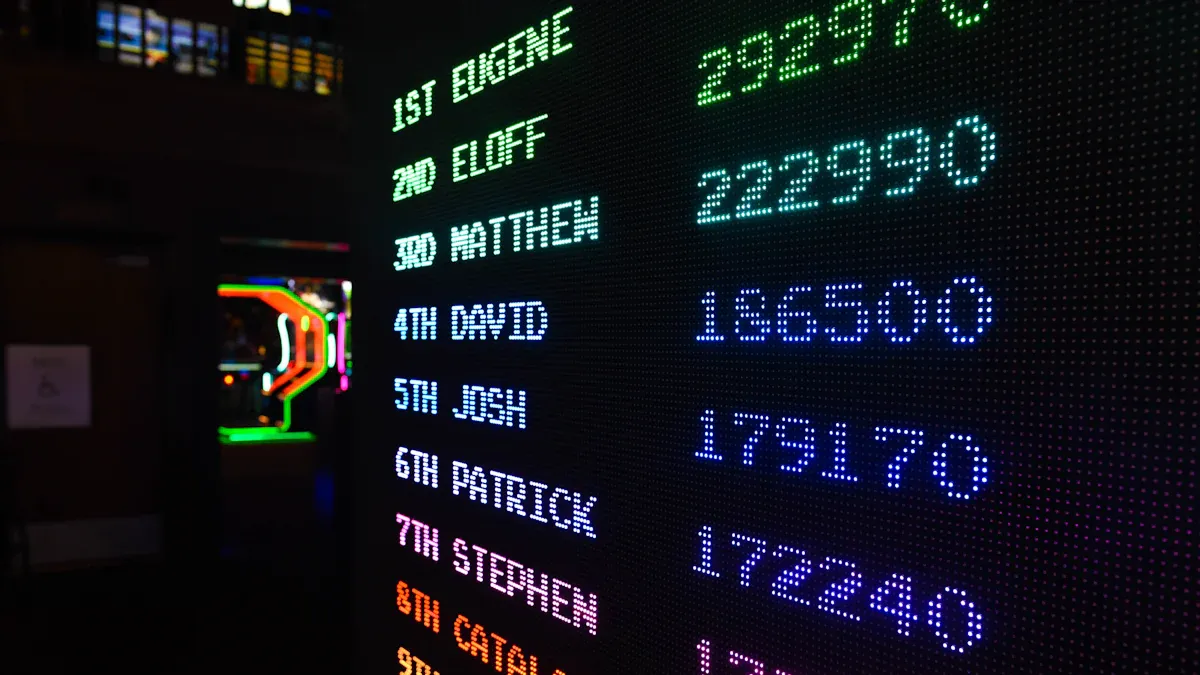
Consumer electronics: TVs, monitors, and smartphones
Backlit LED screens are key in today’s electronics. They are used in TVs, monitors, phones, and tablets. These screens make pictures bright and clear for better viewing. For example, gaming monitors with LED screens show sharp details and bright colors. Phones and tablets also use LEDs for energy-saving, colorful displays. These screens adjust to light changes, making them easy to see anywhere. Companies keep improving them with features like better brightness and color accuracy to meet user needs.
Commercial uses: Advertising and digital signage
Backlit LED screens are important for ads and signs. Stores use them to show bright, eye-catching ads. You also see them in airports, hotels, and hospitals for clear information. The U.S. digital signage market is growing fast. It is expected to reach $9.2 billion by 2030. New LED technology makes these screens more efficient and attractive. Whether shopping or traveling, LED screens show bright and clear content.
Evidence Type | Description |
|---|---|
Digital Signage Market | Expected to reach $9.2 billion by 2030, growing at a CAGR of 6.3%. |
Adoption by Industries | Retail, healthcare, and hospitality sectors are driving demand for digital signage solutions. |
Specialized fields: Medical and industrial displays
Backlit LED screens are very useful in healthcare and industry. In hospitals, they show clear and accurate images for doctors. This helps with medical tests and diagnoses. In factories, LED screens are strong and reliable. They work well in tough places like outdoor areas or busy factories. These screens are made to last and give precise results, helping professionals do their jobs better.
Application Field | Key Performance Metrics | Importance |
|---|---|---|
Medical Imaging | High resolution, color accuracy | Essential for precise diagnostics |
Industrial Use | Robustness, reliability | Necessary for challenging conditions |
Backlit LED displays have changed how we see visuals daily. They show bright colors, save energy, and are slim, making them key in modern gadgets. From gaming screens to medical tools, they improve clarity and accuracy in many areas.
Use Area | How It Helps |
|---|---|
Computer Monitors | Better colors and fast refresh rates for work and gaming. |
Phones/Tablets | Bright, energy-saving screens with clear colors for easy use. |
Car Displays | Sharp dashboards and screens for drivers and passengers. |
Medical Equipment | Clear images for tests and accurate medical results. |
Stores | Bright signs and displays that grab shoppers’ attention. |
Next time you use an LED screen, think about its amazing technology. It not only makes things look better but also helps save energy for a greener world.
FAQ
What makes backlit LED and OLED displays different?
Backlit LED screens use LEDs to light up an LCD. OLED screens have pixels that make their own light. LED screens are brighter and save more energy. OLED screens show darker blacks and better contrast. Each type is good for different needs.
Why do backlit LED displays save more energy?
LEDs use less power than older lights like CCFL. They make more light with less energy. This lowers electricity bills and helps the planet. Plus, LED screens last longer, so you replace them less often.
Can backlit LED displays be used outside?
Yes, they can. Backlit LED screens are bright enough for outdoor use. High brightness and anti-glare features make them great for outside. You’ll see them on billboards and outdoor signs.
How does local dimming make pictures better?
Local dimming changes brightness in certain screen areas. This makes blacks darker and whites brighter. It improves contrast and makes pictures look real. It’s great for movies or games with dark scenes.
Are mini-LED and micro-LED the same thing?
No, they are not. Mini-LEDs use tiny lights for better brightness and contrast. Micro-LEDs don’t need a backlight. Each pixel in a micro-LED screen makes its own light. This gives amazing picture quality and saves energy.
See Also
Comparing Edge-lit And Backlit LED Lights For Displays
Understanding Backlight LED Bars And Their Functionality
Exploring How COB LED Strips Function And Operate
Exploring SUNLITE LED Tunable White Backlit Bars Functions
Easily Illuminate Your Signs With SUNLITE LED Modules

